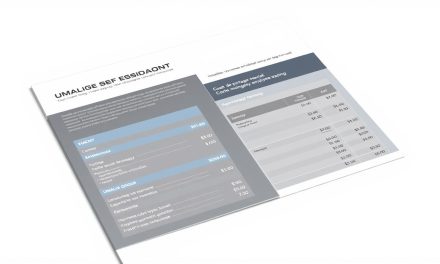Navigating your career can be a challenging and emotionally taxing journey. As you strive for professional growth and stability, it’s essential to consider the role that employee benefits play in your overall job satisfaction and financial security.
In today’s competitive job market, employers are increasingly recognizing the importance of offering comprehensive benefits packages to attract and retain top talent. According to MetLife, the landscape of workplace benefits has evolved significantly since 2020, with a growing emphasis on health insurance and overall wellbeing.
As you make informed decisions about your career, understanding the value and scope of employee benefits is crucial. This guide will explore how these benefits can impact your career trajectory and provide you with the insights needed to make strategic choices about your professional future.
Table of Contents
Key Takeaways
- Employer benefits play a significant role in job satisfaction and financial security.
- The landscape of workplace benefits has evolved, with a focus on health insurance.
- Understanding employee benefits is crucial for making informed career decisions.
- Comprehensive benefits packages are key to attracting and retaining top talent.
- Evaluating benefits is essential for maximizing professional growth and personal wellbeing.
What Are Employer Benefits and Why They Matter
As the workforce continues to evolve, the importance of employer benefits in shaping career stability and job satisfaction cannot be overstated. Employer benefits are a critical component of the overall compensation package thatemployeesreceive from theiremployers.
Definition and Scope of Employer Benefits
Employer benefits are forms of non-wage compensation provided to employees in addition to their normal wages or salaries. These benefits can include a wide range of offerings, from legally mandated provisions to optional perks designed to enhance the employee experience.
The scope of employee benefits is comprehensive, encompassing various types of support that cater to different aspects of an employee’s life. This includes health insurance, retirement savings plans, paid vacation days, and more. The goal is to provide a safety net and improve overall wellbeing.
| Type of Benefit | Description | Benefit to Employees |
|---|---|---|
| Health Insurance | Covers medical expenses | Financial protection against health-related costs |
| Retirement Plans | Helps employees save for retirement | Financial security in the future |
| Paid Vacation Days | Provides time off for rest and relaxation | Improved work-life balance |
The Evolution of Workplace Benefits
The concept of employer benefits has undergone significant transformation since its inception in the late 19th century. Initially, companies offered basic safety nets such as retirement plans and life insurance. Over time, the range of benefits has expanded to include various perks aimed at attracting and retaining top talent.
As noted by a industry expert, « The evolution of employee benefits reflects the changing needs of the workforce and the labor market. » This evolution is driven by economic shifts, technological advancements, and changing workforce demographics.
« The COVID-19 pandemic has accelerated changes in benefit offerings, particularly around flexible work arrangements and mental health support. »
The historical context of employer benefits reveals a shift from basic provisions to strategic tools for talent acquisition and retention. Today, employers offer a variety of benefits to enhance employee productivity and engagement.
The Impact of Employer Benefits on Career Stability
Employer benefits are a key factor in ensuring long-term career stability and professional growth. A comprehensive benefits package not only enhances job satisfaction but also serves as a powerful retention tool, often outweighing modest salary increases in keeping employees loyal to their company.
A study by the Society for Human Resource Management found that 90% of survey respondents considered healthcare an extremely or very important employee benefit. Similarly, 83% valued flexible work and leave time highly. These benefits contribute significantly to job satisfaction and overall well-being.
How Benefits Contribute to Job Satisfaction
Benefits create a sense of security and belonging among employees, significantly impacting their commitment to an organization. When employers offer comprehensive benefits, it demonstrates a genuine investment in their workforce’s well-being, leading to higher engagement and productivity.
Benefits as a Factor in Employee Retention
The role of benefits in employee retention cannot be overstated. Different benefits impact retention at various career stages. For instance, early career professionals value development opportunities, while mid-career employees prioritize work-life balance benefits. By offering tailored benefits, employers can significantly enhance retention rates.
In conclusion, benefits are crucial for career stability, influencing both job satisfaction and employee retention. By understanding and leveraging these benefits, professionals can make informed decisions about their career paths.
Mandatory Employer Benefits in France
The French employment law mandates that employers provide certain benefits to their employees, promoting job security and well-being. These mandatory benefits are a cornerstone of France’s employment landscape, ensuring that employees have a stable foundation for their careers.
Social Security and Healthcare Requirements
Employers in France are required to contribute to the social security system, which encompasses healthcare coverage, retirement pensions, and unemployment insurance. The social security contributions are a significant component of employee benefits, providing comprehensive coverage for employees. French employers must also ensure that their employees have access to complementary health insurance, further enhancing their healthcare coverage.
| Benefit | Description | Employer Contribution |
|---|---|---|
| Healthcare Coverage | Comprehensive health insurance | Partial funding through social security contributions |
| Retirement Pensions | State-managed pension scheme | Significant contribution to pension funds |
| Unemployment Insurance | Financial support during unemployment | Contributions to unemployment insurance funds |
Paid Leave and Other Legal Obligations
French law requires employers to provide a minimum of 5 weeks of paid vacation leave annually, along with various categories of special leave, including maternity and paternity leave. Employers must also contribute to professional training funds and provide profit-sharing schemes for companies with more than 50 employees. For more information on the legal implications of these benefits, you can visit this resource.
These mandatory benefits not only provide a foundation of security for employees but also contribute to a positive work environment, enhancing overall job satisfaction and employee retention.
Health and Wellness Benefits
The modern workplace is evolving to prioritize employee health and wellness, with benefits that go beyond the basic mandatory coverage. This shift is driven by the understanding that a healthy workforce is not only more productive but also more engaged and likely to retain their jobs.
Health Insurance Options
Employers in France often provide health insurance as part of their employee benefits package. This can include complementary coverage that enhances the French public healthcare system, ensuring employees have access to a wider range of healthcare services. For instance, some employers may offer additional health insurance plans that cover dental, vision, and other healthcare needs not fully covered by the public system.
Mental Health Support and EAPs
Mental health is becoming a significant concern in the workplace. Employers are responding by implementing Employee Assistance Programs (EAPs) that provide confidential counseling and support services for employees dealing with personal or work-related challenges. These programs are crucial for maintaining a healthy and productive workforce.
Wellness Programs and Incentives
Corporate wellness programs are designed to promote preventive health measures, physical activity, and overall wellbeing. Employers may offer various incentives, such as fitness reimbursements, smoking cessation programs, and health screenings, to encourage employees to adopt healthy behaviors. These initiatives not only improve employee health but also contribute to a more positive and productive work environment.
In conclusion, health and wellness benefits are a critical component of an employee benefits package. By offering comprehensive health insurance, mental health support, and wellness programs, employers can enhance the wellbeing of their employees, improve productivity, and foster a positive work environment.
Financial Benefits for Long-term Security
Securing your financial future is a critical aspect of your career, and employer benefits play a significant role in this endeavor. Employers offer various financial benefits to help employees secure their long-term financial future beyond their regular salary. These benefits are designed to provide a safety net and enhance overall financial well-being.
The French pension system is a key component of retirement planning, and employer-sponsored retirement plans complement this public pension scheme. Understanding the different types of retirement plans is crucial for maximizing your benefits.
Retirement Plans and Pension Schemes
Retirement plans are a vital part of financial benefits. There are two primary types: defined benefit plans and defined contribution plans. Defined benefit plans provide a guaranteed income for retirees based on their years of service and salary history. Defined contribution plans, on the other hand, allow employees to contribute a set amount of money to their retirement account each month, with benefits depending on investment performance.
| Plan Type | Benefits | Key Features |
|---|---|---|
| Defined Benefit Plans | Guaranteed income for retirees | Based on years of service and salary history |
| Defined Contribution Plans | Benefits depend on investment performance | Employees contribute a set amount each month |
Life and Disability Insurance
Life insurance is a type of insurance that provides financial assistance to the beneficiaries of an employee who dies. Employers often offer life insurance as part of their benefits package. Disability insurance, on the other hand, provides income replacement if an employee becomes unable to work due to illness or injury.
As life insurance and disability insurance are crucial for protecting your family’s financial well-being, it’s essential to understand the details of these policies.
« The primary purpose of life insurance is to provide a financial safety net for your loved ones in the event of your passing. »
Stock Options and Profit Sharing
Stock options are a form of long-term incentive compensation that provides employees with an ownership stake in their company. This can be a valuable benefit, as it allows employees to share in the company’s financial success.
Profit-sharing schemes and other variable compensation plans can significantly enhance your overall financial package. These plans are designed to align employee interests with company performance.
By understanding and maximizing these financial benefits, you can build wealth and security throughout your career. It’s essential to evaluate your employer benefits package carefully and make informed decisions about your financial planning.
Understanding Paid Time Off Benefits
Understanding the nuances of paid time off benefits can significantly enhance an employee’s job satisfaction and overall well-being. Paid time off (PTO) is a valuable employee benefit that encompasses various types of leave, including vacation, sick days, and personal days, all provided at no cost to the employee.
Employers in France offer PTO beyond the legally mandated minimums, reflecting their commitment to employee well-being. The structure of these benefits can vary, with some employers offering additional days off beyond the legal minimum of five weeks annually.
Vacation and Holiday Policies
Vacation policies in France are designed to ensure that employees have adequate time to rest and recharge. Employers may offer floating holidays for personal observances, in addition to public holidays.
| Type of Leave | Legal Minimum | Typical Employer Offerings |
|---|---|---|
| Vacation Leave | 5 weeks | 6 weeks or more |
| Public Holidays | Varies | Additional floating holidays |
Sick Leave and Medical Absence
Sick leave policies interact with France’s social security system, ensuring that employees receive support during medical absence. Employers may provide additional paid sick leave beyond the legal requirements.
Parental and Family Leave Options
Parental leave is a critical employee benefit, with options including maternity, paternity, and adoption leave. Progressive employers enhance these benefits beyond legal requirements, supporting employees during significant life events. For more information on achieving a balance between work and personal life, visit this resource.
Work-Life Balance Benefits

The modern workplace is evolving, with a growing emphasis on creating a harmonious balance between work and personal life. As employers recognize the importance of work-life balance, they are implementing various benefits to support their employees’ well-being and productivity.
Flexible Working Arrangements
Flexible working arrangements are a key component of work-life balance benefits. These arrangements include flextime policies that allow employees to adjust their start and end times, compressed workweeks where employees work longer days but fewer days per week, and job sharing or part-time options that provide flexibility at different career stages.
- Flextime policies enable employees to manage their personal responsibilities while maintaining productivity.
- Compressed workweeks can enhance work-life balance by giving employees an extra day off during the week.
- Job sharing and part-time options offer flexibility for employees with caregiving responsibilities or those transitioning through different career phases.
Remote Work Policies
Remote work policies are another crucial aspect of work-life balance benefits. These policies include fully remote, hybrid, and occasional work-from-home arrangements.
Technology plays a vital role in enabling effective remote work while maintaining team cohesion and productivity. Employers can leverage various tools and platforms to ensure seamless communication and collaboration among team members.
By offering employee benefits that prioritize work-life balance, employers can enhance job satisfaction, reduce turnover rates, and attract top talent in a competitive job market.
Professional Development and Education Benefits
Professional growth is a key aspect of career stability, and employers are increasingly offering benefits to support this. Many companies invest in their employees’ growth through various education and development benefits.
Tuition Reimbursement Programs
One of the significant employee benefits is tuition reimbursement programs. These programs help employees pursue formal education, including degrees, diplomas, and specialized courses. Typically, these programs have reimbursement limits, eligible programs, and service commitments.
Training and Certification Opportunities
Employers also provide training and certification opportunities to enhance employees’ skills. This can range from technical skills to leadership development, ensuring that employees are well-rounded and equipped for their job roles.
Career Advancement Support
Career advancement support is another crucial aspect of employee benefits. This includes mentorship programs, coaching benefits, and other forms of support that help employees progress in their careers. By leveraging these benefits, employees can build marketable skills while remaining with their current employer.
To maximize these benefits, it’s essential for employees to understand how to make the business case to their employer for supporting specific development opportunities that align with both their career goals and organizational needs.
Fringe Benefits That Enhance Your Career
In today’s competitive job market, fringe benefits can be a game-changer for employees looking to advance their careers. These benefits go beyond the standard salary and benefits package, offering employees a more comprehensive compensation plan. Fringe benefits can significantly enhance an employee’s career experience, making them a crucial consideration for both employers and employees.
Commuter and Transportation Benefits
Commuter benefits are a valuable fringe benefit that incentivizes employees to use public transportation. Employers may offer a transportation stipend or an employer-sponsored public transportation pass, reducing the financial burden of daily commutes. Some companies even provide company shuttles or parking allowances, making the commute to work more manageable.
Childcare and Family Support
For employees with young children, childcare can be extremely expensive. Some workplaces offer a monthly childcare stipend or have an on-site childcare center, alleviating the need for external childcare arrangements. These family support benefits are crucial for working parents trying to balance career advancement with family responsibilities.
Unique Perks and Incentives
Unique perks and incentives can differentiate employers and make a job offer more attractive. These can include sabbatical programs, volunteer time off, and concierge services. Lifestyle benefits such as gym memberships, meal subsidies, and wellness stipends also enhance an employee’s quality of life, contributing to overall job satisfaction.
By understanding and leveraging these fringe benefits, employees can significantly enhance their career experience and overall well-being.
How to Evaluate an Employer Benefits Package

Evaluating an employer benefits package is crucial when considering job offers or reviewing your current compensation. It’s essential to look beyond the salary and understand the total compensation value, which includes various benefits that can significantly impact your financial security and job satisfaction.
To effectively evaluate an employer benefits package, you need to assess the total compensation value. This involves calculating the monetary value of benefits such as health insurance, retirement contributions, and paid time off. For instance, if your employer contributes to a retirement plan, this can be a significant addition to your overall compensation. Similarly, comprehensive health insurance can provide substantial financial protection.
Assessing the Total Compensation Value
When assessing the total compensation value, consider both direct financial benefits and indirect quality-of-life benefits. Direct financial benefits include salary, bonuses, and employer contributions to retirement plans. Indirect benefits might include flexible working arrangements, professional development opportunities, and wellness programs. To quantify these benefits, you can assign a monetary value to each and compare it against your current or other potential job offers.
Comparing Benefits Across Employers
Comparing benefits across different employers requires a detailed examination of each plan’s specifics, such as coverage levels, deductibles, employer contributions, and eligibility requirements. For example, one employer’s health insurance plan might have lower premiums but higher deductibles, while another might offer more comprehensive coverage but at a higher cost to you. By carefully evaluating these details, you can make a more informed decision about which benefits package best suits your needs.
Ultimately, evaluating an employer benefits package involves weighing the benefits against other job factors like salary, growth opportunities, and workplace culture. By taking a comprehensive approach, you can make more informed career decisions that align with your personal and professional goals.
Negotiating Your Employer Benefits
The art of negotiating employer benefits is often overlooked, yet it plays a vital role in maximizing your total compensation. Negotiating your benefits effectively can make a significant difference in your job satisfaction and overall career stability.
When and How to Negotiate Benefits
When negotiating benefits, timing is crucial. The best time to negotiate is usually during the job offer stage, before accepting a position. However, benefits can also be negotiated during performance reviews or when taking on additional responsibilities.
To negotiate effectively, it’s essential to research market standards and build a compelling case for your requested benefits. This might involve highlighting your achievements, the value you bring to the company, and how your requested benefits align with industry norms.
Prioritizing Benefits Based on Career Stage
It’s also important to prioritize benefits based on your career stage and personal circumstances. For instance, early-career professionals might prioritize professional development benefits, such as training programs or tuition reimbursement, to enhance their skills and career prospects.
On the other hand, mid-career employees might focus on retirement contributions, work-life balance, and flexible working arrangements to achieve a better quality of life.
| Career Stage | Priority Benefits |
|---|---|
| Early Career | Professional development, training programs, tuition reimbursement |
| Mid Career | Retirement contributions, work-life balance, flexible working arrangements |
| Late Career | Health insurance, retirement planning, additional paid time off |
By understanding when and how to negotiate benefits and prioritizing them based on your career stage, you can create a more comprehensive and satisfying compensation package.
Conclusion: Maximizing Employer Benefits for Career Growth
Employer benefits play a significant role in career development and financial security, making it essential to understand how to utilize them effectively. As you progress in your career, the importance of making informed decisions about your benefits cannot be overstated.
To maximize employee benefits, it’s crucial to develop a personalized strategy that evolves with your changing needs. This involves regularly reviewing and reassessing your benefits selections during annual enrollment periods and after major life events. By doing so, you can ensure that your benefits align with your current career stage and personal circumstances.
Understanding the various types of benefits available is key. This includes health and wellness benefits, financial benefits for long-term security, and work-life balance benefits. Each of these categories offers unique advantages that can significantly enhance your overall compensation package.
Employees should also be aware of emerging trends in employer benefits and position themselves to take advantage of innovative offerings as they develop. This proactive approach enables you to leverage your benefits package not just for immediate needs but as strategic tools for long-term career growth and personal wellbeing.
To achieve a balance between immediate compensation and long-term security, it’s essential to become an informed and strategic consumer of employee benefits. By doing so, you can enhance your financial security, health and wellbeing, work-life balance, and career development. This is an essential career skill that pays dividends throughout your professional life.
In conclusion, maximizing employer benefits requires a comprehensive understanding of what’s available and a strategic approach to selecting benefits that align with your needs. By following these guidelines and staying informed about the evolving landscape of employee benefits, you can optimize your career growth and overall wellbeing.
FAQ
What are the most common types of employee benefits?
The most common types of employee benefits include health insurance, retirement plans, paid time off, life insurance, and disability insurance. Some companies also offer commuter benefits, employee assistance programs, and wellness initiatives.
How do health and wellness benefits impact job satisfaction?
Health and wellness benefits, such as health insurance and mental health support, can significantly impact job satisfaction. When employees feel that their health and well-being are supported, they are more likely to be engaged and satisfied with their job.
What is the purpose of a retirement plan?
A retirement plan is designed to help employees save for their future and achieve financial security. Retirement plans, such as 401(k) or pension schemes, allow employees to contribute a portion of their salary to a retirement account on a tax-deferred basis.
How do flexible working arrangements contribute to work-life balance?
Flexible working arrangements, such as telecommuting or flexible hours, can help employees achieve a better balance between their work and personal life. This can lead to increased productivity, reduced turnover, and improved job satisfaction.
What are some examples of fringe benefits that can enhance my career?
Fringe benefits, such as commuter benefits, childcare support, and unique perks, can enhance your career by providing additional support and incentives. These benefits can help you manage your work-life balance and improve your overall well-being.
How can I evaluate an employer benefits package?
To evaluate an employer benefits package, consider the total compensation value, including salary, benefits, and perks. Compare the benefits offered by different employers to determine which package best meets your needs and priorities.
Can I negotiate my employee benefits?
Yes, you can negotiate your employee benefits. When and how to negotiate benefits depends on your career stage, salary, and other factors. Prioritize your benefits based on your needs and goals, and be prepared to discuss your expectations with your employer.
What is the role of life insurance in employee benefits?
Life insurance is a type of employee benefit that provides financial protection for employees’ families in the event of their death. It can help pay for funeral expenses, outstanding debts, and other financial obligations.
How do employee assistance programs support mental health?
Employee assistance programs (EAPs) provide confidential counseling and support services to help employees manage mental health issues, such as stress, anxiety, or depression. EAPs can help employees address their mental health concerns and improve their overall well-being.





